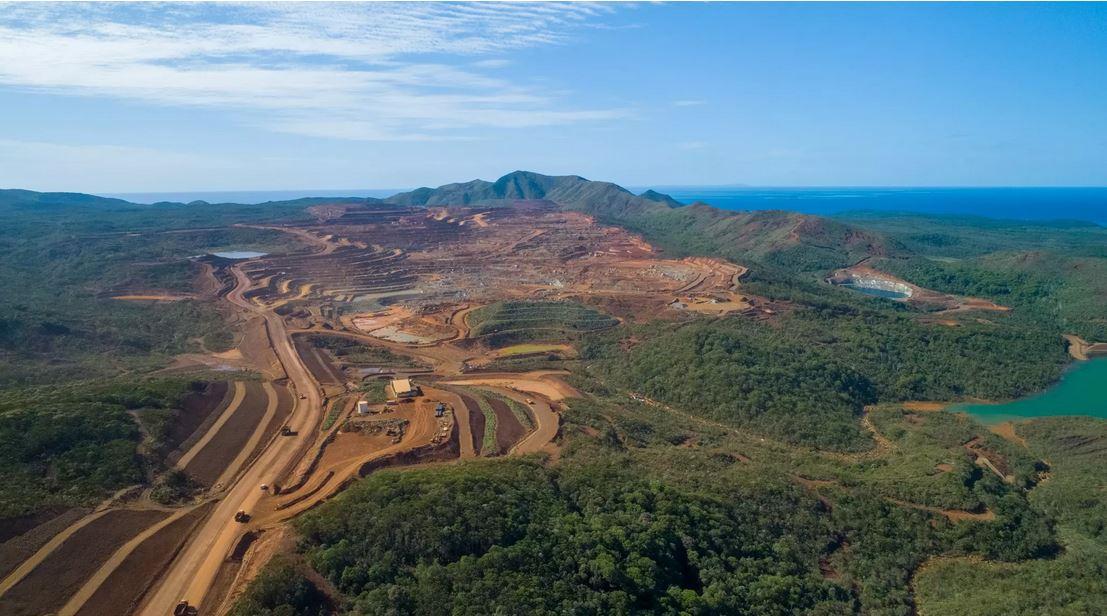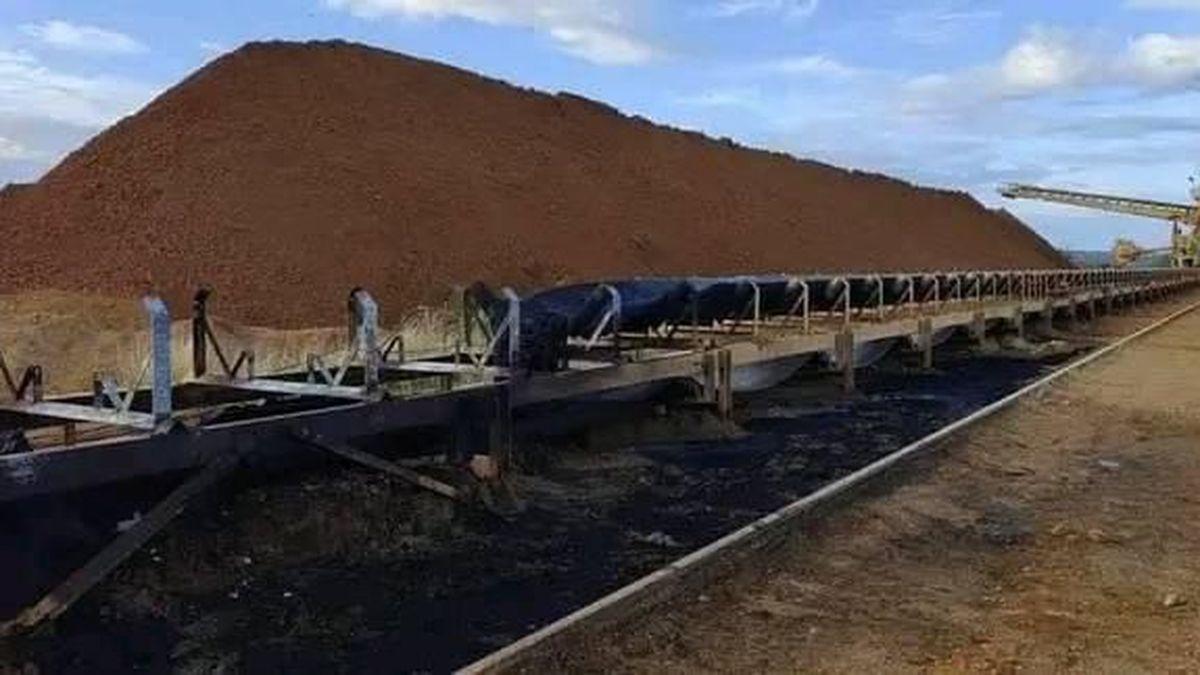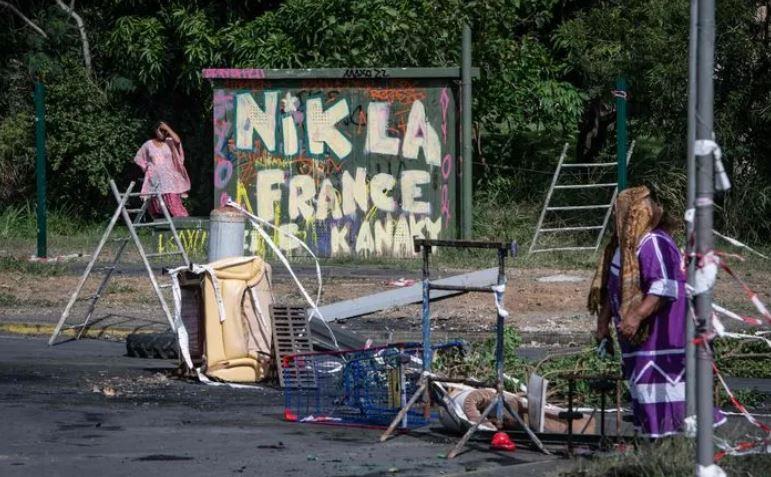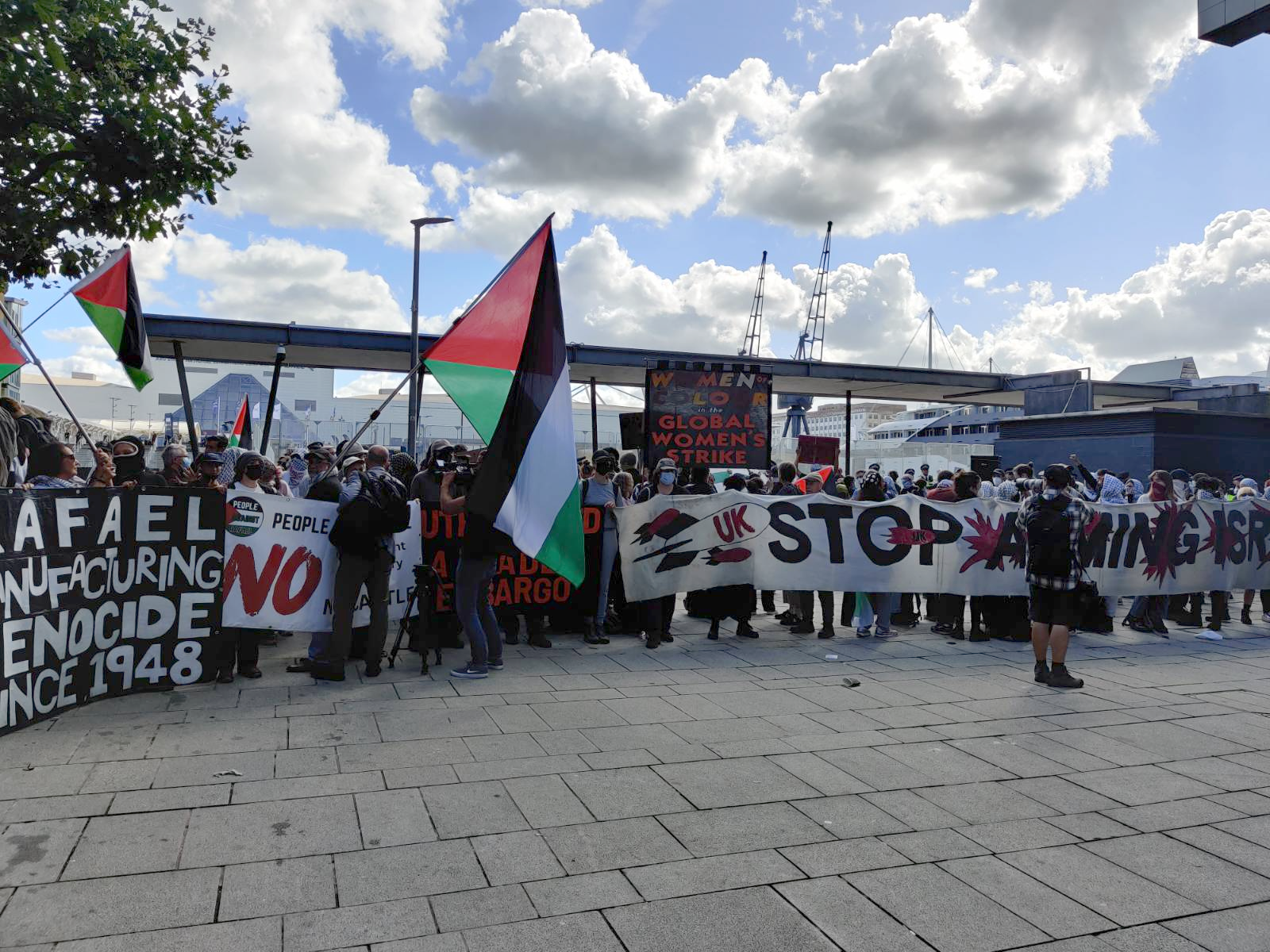New Caledonia has a quarter of the world’s nickel reserves, and each faction—separatists, loyalists and the State—have possessed one of the major factories
Despite ongoing repression and the French colonial authorities’ announcements of a return to normal, the situation in New Caledonia is far from being resolved. Four weeks after the outbreak of the insurrection on part of Kanak youth, La Tontouta international airport remains closed “until further notice”. Only the Magenta aerodrome has been open again since June 5 for internal flights within New towards Lifou, Ouvéa and Maré, and nearly 500 French tourists have been stranded for three weeks on the archipelago of 270,000 inhabitants. As for the north of New Caledonia, it is the army which is directly responsible for supplying (and therefore rationing) the stores, by managing the containers which arrive by barge to Koné.
Despite the pressure of 3,500 cops and soldiers sent to the islands, some of the roadblocks are still put back in place by Kanak insurgents after being dismantled, in the districts of Nouméa or along the 50 kilometer road which leads to the airport, without sometimes forgetting to trap them with gas canisters or even prepare some homemade surprises for the blues: on June 4 in Dumbéa, for example, a gendarme fell to the bottom of a manhole by walking on branches placed above in order to hide the opening.
In total, 212 police officers and gendarmes have been injured since May 13, but also a significant number of Kanaks whom the authorities officially refuse to count. Several insurgents have lost an eye or had facial bones shattered following police flash ball shooting, others have bullet wounds and are in a coma.
Two recent examples: on May 29 in Dumbéa around 8 pm, during the attack on a roadblock by the cops, the latter were subject to numerous pelted stones but also a rifle shot. The GIGN responded and fired six times “towards” the shooter. An insurgent is seriously injured: “Despite surgical intervention, his vital prognosis is still in jeopardy, the medico-legal findings showing the presence of two projectiles, one in the thorax and the other in the shoulder”.
Then on June 3 around 4 p.m. at the Col de la Pirogue, at the Saint-Laurent tribe dam, on the strategic road leading to the international airport, the gendarmes opened fire on Kanak insurgents: one was shot in the shoulder, and another in the head. We learned on Saturday June 8 that the latter, Lionel Païta, had died in hospital, bringing the number of deaths in the territory to eight (five Kanaks, including two from Canala, one from Maré, one from Poindimié, one from Païta / a Caldoche in Kaala-Gomen who had fired against a roadblock / two gendarmes, one of whom was killed by a colleague).
Needless to say, in such a situation, wild rumours are swirling about the number of “disappeared” well beyond the 8 official deaths, while the prisons of Nouméa and Koné are filled to the brim and Kanak prisoners are deported to Polynesia and Fresnes, the official report announces 726 police custody, 115 referrals to court and 60 committal warrants since May 13.
The nickel industry
At the bottom of this insurrection of Kanak youth, in addition to colonization, racism, humiliation and hardship, is also the issue of nickel. To put it briefly, New Caledonia has a quarter of the world’s nickel reserves, exploited in open-cast mines, to supply three pyro-metallurgical processing plants. While currently providing only 5% or world production, the pyrometallurgical factories which provide all the artificial wealth of the islands (90% of the archipelago’s exports and 25% of jobs). These were already almost bankrupt or on standby before the uprising. Each of the three main factions—separatists, loyalists and the State—have possessed one of the major factories.

The first factory (Koniambo Nickel, KNS), the one in the hands of Kanak separatists in the north, has been shut down since the February 2024 withdrawal of its key shareholder, the Swiss raw materials trading giant Glencore. The activity has since been solely focused on maintaining the integrity of the furnaces (if the furnace of a metallurgical factory stops and is no longer supplied with ore or electricity, not only can it be permanently damaged if the shutdown is abrupt, but it also takes months to restart it).
The second, historic factory founded in 1880 belongs to SLN (Société Le Nickel), 56% owned by the French group Eramet, itself 27% owned by the French State. It is located in Doniambo, and was already in cessation of payments before the insurrection, kept artificially alive thanks to a state loan of 60 million Euros last February. Eramet wants to get rid of its metallurgical activities in New Caledonia, particularly since it operates the largest nickel mine in the world at Weda Bay, on the island of Halmahera (Indonesia), right in the middle of primal forests (Indonesia has in fact gone up to 55% of world nickel production) with Chinese capital, which has caused prices to collapse by almost 43% in 2023 alone, thanks to unbeatable labour and electricity prices.
In addition, it has just obtained gigantic lithium extraction concessions in Chile and Argentina. In Kanaky, this factory has been the object of several counter-insurgency operations by the French state—with all five mining sites that supplied it blocked for four weeks, while its stock of ore ended up running out, not to mention the riots taking place a few hundred meters from its factory.
As for the third factory, called the Southern one and located in Goro, it is owned by the Prony Resources consortium and is also in cessation of payments, only surviving thanks to a loan from the French State of 140 million Euros in March. Its key shareholder, the Swiss trader Trafigura, has wanted to resell its shares for months, and the famous “contract of the century” signed in 2021 with Tesla is still a long way off. As with SLN, Prony Resources’ activities at the mine and at the factory have been stopped since the start of the insurrection, even if its hydro-metallurgical process is different from that of the two other factories in the archipelago.
Faced with this, the State has been trying for months to straighten out a colony that it does not want to let go of at any cost, by trying to negotiate with the Caledonian government (made up of both loyalist and separatist parties, and led by the latter) a “Nickel Pact” to the tune of 200 million Euro in energy subsidies, with several strings attached: that the factories would commit to supplying the European market with batteries for electric vehicles as a priority; that this local government sharply increases taxes; that it authorizes the export of much more raw ore; and that it temporarily restores jurisdiction over the mining code to the State.
In short, this “Nickel Pact” which has undergone eight versions since November 2023 and has still not been signed, is a project aimed at intensifying the extraction of nickel for the metropolis, which would transform Kanaky into a purely mining territory, definitively embedded in a neo-colonial framework. This is unlike the famous Nouméa agreements of 1998, supposed to buy social peace, and which planned to use mining revenue to promote the development of New Caledonia until its possible independence (hence the three referendums on the latter from 2019 to 2021, the transfer of mines and a factory to the Kanak bourgeoisie, and the creation of a local government).

The “Nickel Pact” therefore offends both the Kanak politicians who were banking on this resource to found their economic independence (as in “the State wants to steal our nickel”), and the urbanized Kanak youth who were already denouncing the corrupt politicians who never see the colour of all the money dumped on the archipelago. It also offends the collectives of Kanak tribes, who increasingly see the devastation caused by the intensification of extractivism (pollution of rivers, health, landslides), and began to advocate an independence which would drive out not only the French state but also the mines.
We therefore understand why the vote in the Senate on April 2 and then in the Assembly on May 15 to thaw the New Caledonian electorate (blocked since 1998), having the consequence of digitally perpetuating the colonization of the archipelago, could have been the spark of an insurrection which methodically devastated the businesses and industries of the island’s capital. According to the latest report from High Commissioner (Prefect) Louis Le Franc, made public on June 7, 570 businesses were destroyed and more than 1.5 billion Euro in direct damage were caused.
Sabotage the nickel industry
Since the start of the insurrection, we could legitimately wonder what the situation was with nickel mines and factories in terms of sabotage (or not). Outside of the capital Nouméa, dotted with blockades, where young Kanak insurgents looted and set—what was the situation, for example, out in the periphery where half the population—mostly Kanak—lives? Even if we suspect that information has difficulty filtering, it seems that it while it was the SLN (held by the State) which was mainly attacked, so was the Prony Resources factory (held by Loyalists).

- In Thio, on the east coast, damage was caused to the conveyor belt which allows ore carriers to be loaded at the seaside. The Plateau and Camp des Sapins mines were also attacked, with looting and destruction.
In Kouaoua, still on the east coast, the 11-kilometre long ore conveyor to the bay loading dock, called “the serpentine”, suffered its twelfth fire in ten days, on June 1. - In Népoui, a village located in the centre of the west coast, an ore carrier arrived on June 2 urgently, to load 19,000 tonnes of nickel to be brought back immediately to Nouméa, in order to supply the SLN factory in Doniambo which had finished its three weeks of stocks, and risked its ovens being “irreparably damaged”. Except that unfortunately, in the middle of the night, part of the conveyor was set on fire, affecting around a hundred meters of the conveyor belt. As a result, the loaded ore carrier arrived safely one day late (June 4), knowing that the Doniambo factory now needs to receive such a boat every three to four days to operate. Since then, the SLN has sent a second ore carrier, but this time much further north (towards the Tiébaghi mine, in Koumac), hoping that the young Kanaks would be less hostile to it.
- In Houaïlou, a village on the east coast, the Mining and Quarrying Techniques Training Centre (CFTMC), located on the Poro mine, has been reduced to nothing: “All the training tools, mining machines, training rooms courses, driving simulators were vandalized, vandalized and burned. “He trained young people wishing to work in the mining sector.
- In Nouméa, on May 9 around 4 a.m., the security guard positioned on the quay had been calmed by unknown persons, before the moorings of the Prony Express ferry dedicated to transporting employees of the Prony Resources factory were cut. The maritime launch then went adrift. Then in Goro, located in the south of the island an hour and a half by car from the capital, on May 23, the Prony Resources factory was directly attacked, and two vehicles were lost. Since then, it has been guarded day and night by 35 guards from the private security group Erys, but the industrial and mining complex is still far from being able to restart, and even triggered its “Special Intervention Plan” (PPI) on June 7. As it happens, “The current disruptions have forced us to stop our operations. We are facing an interruption in the supply of raw water from Lake Yaté but also, since June 4, we have no longer been supplied with electricity,” said the industrial giant a few days ago, without daring to speak of sabotage. …
For an insurrection not to die it needs to deepen and overcome its internal contradictions, but also oxygen, a lot of oxygen. It is up to everyone, here, within the French colonial metropolis which is in the process of crushing the Kanak insurgents who have not yet given up their arms (nor their weapons), to give it as much as possible. Out of solidarity, or quite simply out of hatred of one’s own State.
~ Sans Nom








